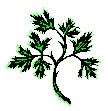
The United Reformed Church Chesham
 |
| Home page |
 |
| Newsletter |
 |
| Contact details |
 |
| Young people |
 |
| Meet & Eat |
 |
| Activities |
 |
| History |
 |
| What is the URC |
 |
| Easy fundraising |
 |
| Urdu/Punjabi |
 |
| Christingle Song |
 |
| Links |
 |
| Safeguarding |
 |
| Data Privacy Statement |
 |
 |

October 2006 Newsletter
 Dear Friends
Dear Friends

Autumn is a lovely time of year when we can enjoy a rich variety of colours. The leaves of our many deciduous trees change from green to a mix of hues until they gradually become crisp and fall. During the spring and summer the leaves have served as factories where most of the  foods necessary for the tree's growth are manufactured. This food-making process takes place in the leaf in numerous cells containing chlorophyll, which gives the leaf its green colour. This extraordinary chemical absorbs from sunlight the energy that is used in transforming carbon dioxide and water to carbohydrates, such as sugars and starch. In the autumn, because of changes in the length of daylight and changes in temperature, the leaves stop their food making process. The chlorophyll breaks down, the green colour disappears, and the yellow to orange colours become visible.
foods necessary for the tree's growth are manufactured. This food-making process takes place in the leaf in numerous cells containing chlorophyll, which gives the leaf its green colour. This extraordinary chemical absorbs from sunlight the energy that is used in transforming carbon dioxide and water to carbohydrates, such as sugars and starch. In the autumn, because of changes in the length of daylight and changes in temperature, the leaves stop their food making process. The chlorophyll breaks down, the green colour disappears, and the yellow to orange colours become visible.

The ripening fruit also changes to bright colours and this year there seems to have been good crops. To call an apple red or green is a simplification, because no apple is just one colour! Grass is green, but many shades of green are seen in the hundreds of different types of grasses. Natural colours are quite amazing. It is not just the sights of autumn that attract, because even if you are unable to see the colours clearly, the smells of harvest and the feel and taste of different fruits enrich our senses.

Colours are important in our lives, our emotions are often described in terms of colours. Colour coding according to seasons is quite popular and many people test out which season’s colours are best for their choice of clothes. We are still not as good as nature at choosing colours and perhaps we would hesitate to combine some colours, which do occur naturally with great success! In the Old Testament we are told that Joseph’s Father gave him a multicoloured coat, an extravagant gift for a much loved son. God is a skillful artist and his creation has a purpose for each component part, so that the whole may work effectively.

It is not often enough that we stop to wonder at the rich variety of life. Jesus saw the forgotten or obscured parts of people’s lives and encouraged them to reach new heights. The disciples lives, enabled by Jesus, changed and became much more colourful! We too can marvel at the way Jesus can change lives today. Each small part, each small action, adds to the whole colourful picture. Time to wonder – why not join the Quiet Day on the 14th October? Not a day to be silent, but a day to reflect, to enjoy natural surroundings and to share thoughts with God and each other.
As we celebrate One World Week at the end of the month, again we will look at the great variety in our colourful world. The world picture is made up of problems and joys, but we pray that with God’s help we may play our part towards a fairer earth, where the bright colours may blend together in peaceful harmony.
With love
Bridget
 | A prayer for October: Creator God, we give thanks for our colourful world. We pray for a fairer distribution of the world’s resources and respect for all human beings. We pray not for uniformity, but for a celebration of the rich diversity that speaks of God’s Kingdom on earth. Amen |